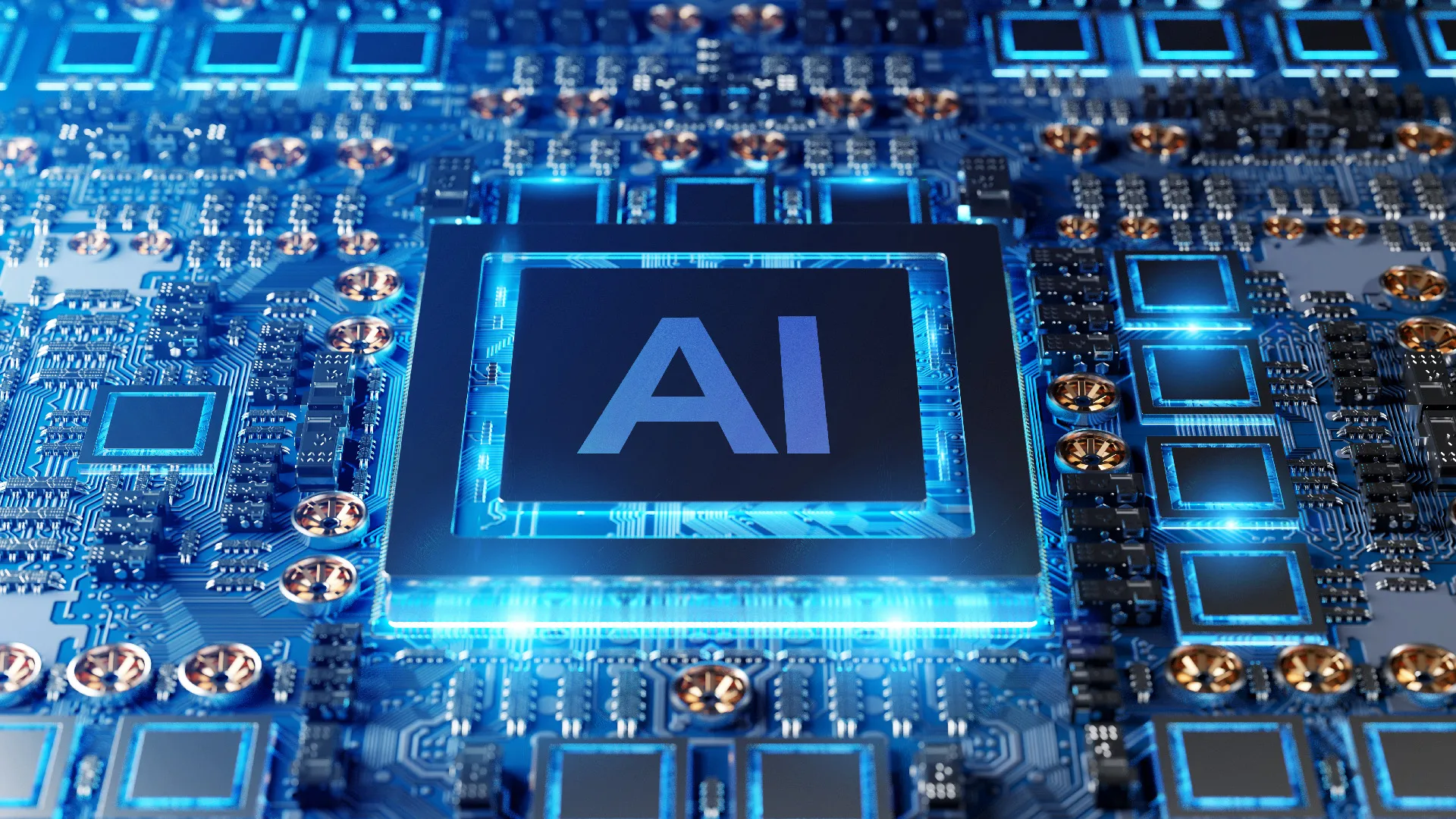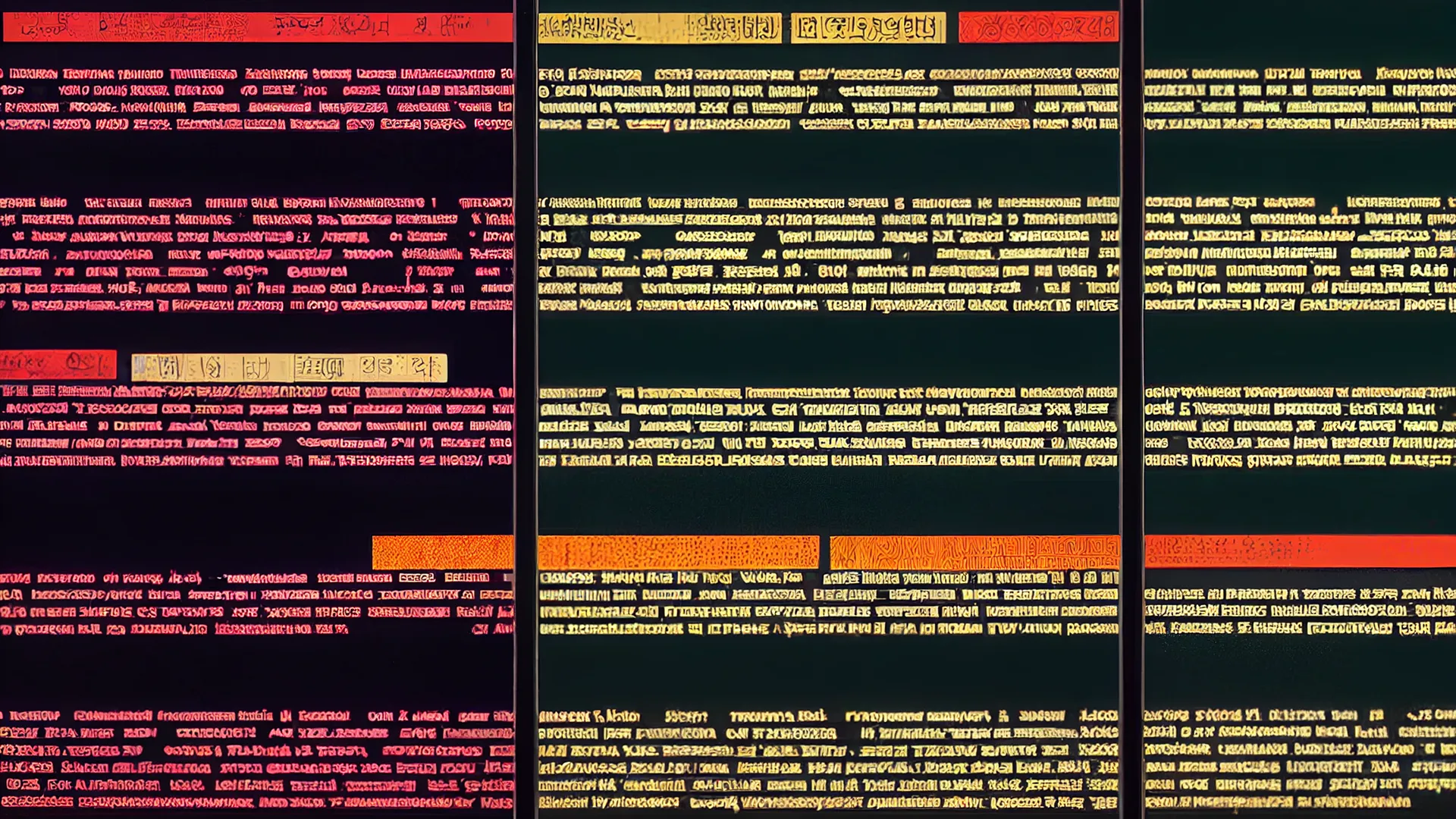Audio and video analysis of files recovered with forensic techniques
In a world dominated by digital assets, data loss is an event that, unfortunately, has happened to all of us in one way or another. Fortunately, there are several so-called “forensic” applications that are capable of recovering the contents of damaged or deleted files, but what to do with the restored audio and video files if they still have defects? Videoma Archive allows you to convert the maximum usable data content, thanks to its multiple AI analyzers.
Forensic recovery of media files
Whether by accident, hardware or software failure, sometimes files are damaged or deleted. There are a number of software tools that are capable of recovering files that have been deleted in whole or in part, as well as other, so-called “forensic” tools that can recover (at least in part or to some extent) segments of damaged files. Today, many of these tools employ artificial intelligence algorithms to infer data and reconstruct sequences of information. However, they have their limitations. When a segment of original information has completely disappeared, there is not much to do. Nevertheless, in most cases it is better to have some of the content than none at all. Obviously we would like to have the complete Venus de Milo, but it is better to have the part we have, than not to have known of its existence at all.
Convert recovered audio & video into useful data
A video or audio file that has been damaged in multiple places may not be suitable for normal playback due to the multiple cuts. However, Videoma Archive can analyze the video, extract and transcribe as much audio as possible, as well as detect objects or faces in the sequences where they appear. Having this data in a text format, easily analyzable, allows the segments that have been saved to be related to each other and, together with similar files, to obtain the maximum value from the available data. In this sense, AI technologies not only help us to restore files, but also to extract the maximum value from them.

How to avoid data loss?
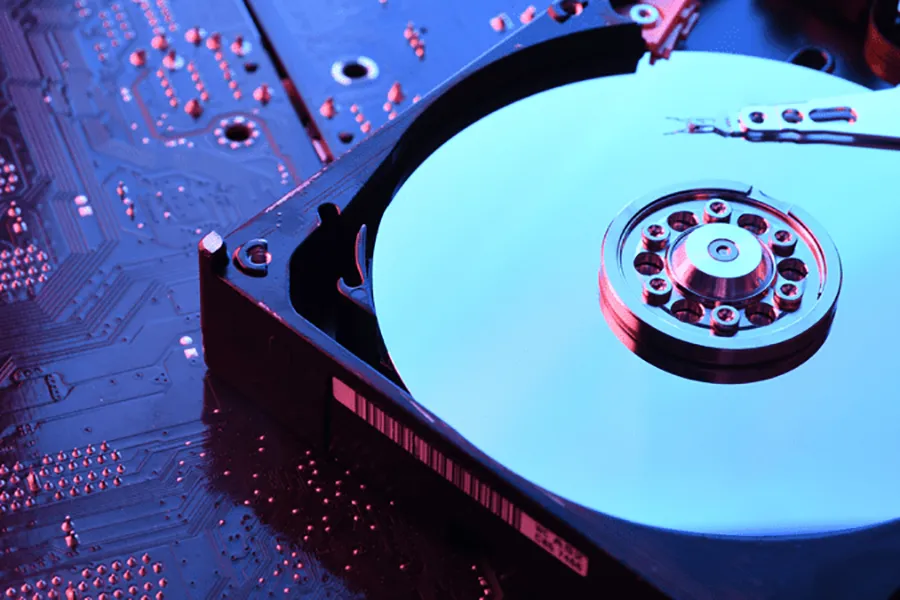
Naturally, the best way to avoid data loss in the first place is to have a fault-tolerant storage system (some form of RAID or redundancy) or to have up-to-date backups in a separate location, so that they cannot be affected by the same problems as the originals (power surges, flooding, etc.). The cloud, for example, is an excellent solution for having copies in a geographically distinct location.
In any case, should the worst happen, luckily there are already AI platforms such as Videoma that will help us recover and analyze the fragments we can restore.
Advancing towards transparency and social inclusion: The importance of video-records in municipal and regional elections
The recent municipal and regional elections in Spain have highlighted the need to strengthen transparency and citizen participation in the political arena. In this context, the implementation of a system of municipal video records emerges as an effective solution. Not only does it improve communication towards citizens, but it also has a significant impact on social inclusion, providing access to people with hearing problems. In this article, we will explore how video-acts become a key tool to promote transparency in governments and encourage the participation of all citizens.
Video records are the way to transparency
Video records have been legally regulated in Spain since no less than 1985. Although technology has advanced substantially since that time, already then the Ley de Bases del Régimen Local 7/1985 (LRBRL) establishes in its article 25.ñ as competence of the municipalities “The promotion of participation” [of citizens] “in the efficient and sustainable use of information and communication technologies”. Likewise, article 70 bis provides that “Local Entities and, especially, municipalities, must promote the interactive use of information and communication technologies to facilitate participation and communication with neighbors…”. In 2018, finally, with Royal Decree 128/2018, the legal regime of video records in local administrations is clearly regulated. And their advantages are multiple:
- Greater transparency and access to information: The use of video records in municipal and regional plenary sessions provide greater transparency in decision-making and in the actions of local governments. By recording and broadcasting public sessions and meetings in video format, citizens are given the ability to access and review political processes and debates in a clearer and more understandable way. This contributes to greater accountability and builds citizens’ trust in their elected representatives.
- Citizen participation: The implementation of video records also promotes citizen participation. By having access to the recorded sessions, citizens can follow the debates and understand the arguments put forward by the different political actors. This encourages a greater involvement of citizens in decision-making, since they can have an informed opinion on public affairs and express their point of view. In addition, the possibility of reviewing the video records allows citizens to stay up-to-date and participate more actively in local policies.
- Strengthening citizen trust: The transparency and inclusion generated by the video records have a direct impact on citizen trust in municipal and regional governments. By providing clear and direct access to political discussions, the perception of opacity is reduced and confidence in public management is strengthened. Citizens can verify how decisions are made.

Better inclusivity

Social inclusivity is one of the additional benefits of video records is their ability to promote social inclusion. People who have hearing problems or are deaf often face communication barriers in the political arena as they are unable to hear meetings and sessions. The implementation of video records with subtitling and automatic transcription allows deaf people to access and understand the content in a more accessible and inclusive way. This not only promotes equal opportunities, but also enriches the democratic debate by ensuring that all citizens can fully participate in the political process.
In short, the tools already exist, the technology as well, and the legal framework is clearly established. Therefore, the extensive diffusion of intelligent video recording systems, such as IActa, in local and regional councils is a benefit for citizens and improves interaction with governments.
ISID presents its Webcontainer for Videoma
Videoma, the AI audio and video archiving and analysis platform, has been completed with a new webcontainer, an HTML element that integrates into any website in minutes, and is capable of displaying the multimedia elements stored in Videoma, filtering them, exporting them, etc Everything in a browser, without additional applications.
Madrid, May 22, 2023. ISID, a technology company focused on AI solutions and platforms for advanced video and audio storage and analysis, has expanded the functionality of its well-known Videoma platform, dedicated to video and audio AI archiving and analysis. . Due to the need of many clients to want to show parts of their multimedia file on the corporate or institutional website, ISID has developed a webcontainer that allows connecting with Videoma and that, with three lines of code on any web page (made with any technology) Allows you to view archived content on Videoma.
Ad hoc images, documents & videos
The webcontainer allows easy viewing of the contents stored in Videoma, such as videos, images or documents, and adapts to the look and feel of the site almost automatically. The system consists of two parts: on the one hand, the display element on the page itself, and on the other, a simple configuration in Videoma, to select what content should be displayed in the webcontainer.
In this way, the platform administrators will be able to choose what to show in each case, the inclusion of several webcontainers in different parts of a website is also allowed, each one with its own particular content and adapted to the needs of the page on which it appears.
Users will also be able to filter the content they are viewing, based on options that administrators have determined. With this, this Videoma dynamic web part becomes a simple visualization tool to share the content that results from the analyzes and rules that have been defined in Videoma.

Simple access to complex information
In this way, the webcontainer becomes an interface that is easy to implement and use by anyone, without end users having to come into direct contact with the platform or know how it works. It is a quick way to access the results of the AI analysis that Videoma performs in the background and its applications are numerous.
From displaying parts of museum collections for hobbyists or researchers, to summaries of current news or easy access to historical video libraries, the webcontainer and its configuration flexibility allow you to share valuable materials with the public, in an interface that is familiar to everyone. the world: the web.

The role of women in AI
For the past years, gender equality has been a recurring theme in many areas. Many Businesses are pushing to get a more diverse workforce and trying to integrate women in areas that are, traditionally, overwhelmingly populated by men. However, in the tech sector there is still a lot of work to be done, especially in bleeding edge tech, like AI.
Tech isn’t just in the Tech sector anymore…
Artificial Intelligence is one of those trending sectors right now. Everyone has heard about it and we are actually using AI in our daily lives, when we ask Alexa for the weather in London or Siri to set an appointment for next Monday. The AI market is valued at over 94 billion dollars currently and is expected to grow over 38% until 2030, following estimations from Gartner. The drivers behind this growth are the new uses of generative AIs like ChatGTP or Google Bard, advances in robotics, the digital assistants many of us use, self-driving cars and all the Smart Home gadgets we like to use.
In this day and age, every sector is becoming a technology sector in its own way. Digital technologies are completely pervasive in almost every area of our work or personal lives. However, despite this, studies from UNESCO show that “…women and girls are 25 per cent less likely than men to know how to leverage digital technology for basic purposes, 4 times less likely to know how to program computers and 13 times less likely to file for a technology patent…”. Which is sad if we remember that we live in 2023.
Since the beginning of the Industrial Revolution, the role of women in technology or the sciences has been very small, although with notable exceptions like, for example, Ada Lovelace. Although the entry barriers and the bias toward the “fairer sex” they faced in those times have largely disappeared, only about 20% of employees in technical roles at major Machine Learning companies are women. And the numbers get worse if we look at the percentage of female AI researchers: only 12% are women. And this figure halves again when we talk about professional developers in the field: just a mere 6% are female. Bearing in mind that women make up the 49,6% of the planet’s population the resulting figures are really low.
The reasons are, in part, systemic barriers that prevent women from pursuing careers in science and technology. One of those is the gender pay gap. In the EU, in 2021 women earned an average of 13% less than their male counterparts. In the US this figure is even higher: in 2022 women had an average income that was 18% lower if compared to men in the same position.

Why aren’t there more women in AI?


Source: LinkedIn
There are a couple of reasons why women don’t choose a technical career, especially one oriented to artificial intelligence or machine learning. Here are some of them:
- Lack of role models. Young girls or teenagers have very few women in the field to look up to, so it’s more difficult that the interest for a career in tech will be sparked.
- Lack of encouragement. Another factor is that girls aren’t usually encouraged to pursue a path in tech and are subtly directed to more stereotypical fields. Sometimes any career in STEM isn’t actually presented as an option. The result is fewer females in university tracks that lead to AI or ML.
- Lack of retention. Some studies show that women that enter the AI sector tend to leave sooner than their equivalent male counterparts. The reasons are not clear, but an overwhelmingly male dominated field, gender pay gaps and a glass ceiling to get to high level senior positions all contribute. If you take a clear career path from someone, it’s more likely that she will consider other fields in which advancement is possible.
- Lack of work/life balance. The tech industry is arguably amongst the most demanding sectors, on top of fast-changing. This can result in a less-than-attractive scenario to some women as they, in more cases than not, are more in charge of their children than their partners. Fortunately, this is changing, but still. Balancing a demanding job with family life isn’t easy for anyone, so many women will end up choosing family over work. At least the pandemic has given us one positive thing: working remotely now is seen as normal.
If you add all of this up, you can see that the resulting scenario is less than ideal to further equal opportunities for women in the high-tech field. In 1984 37.1% of Computer Science degrees in the US were awarded to women. Only 14 years later, this had dropped by almost 10%.
Notable women in AI
Despite AI being a field that is currently male dominated, women have made significant contributions to the development and application of AI technologies over the past 4 decades.
Elaine Rich was instrumental in the development of natural language processing (NLP) and expert systems. Rich’s work helped to establish the foundations of AI research and paved the way for future developments in the field.
Cynthia Solomon was a pioneer in the use of computers in education and developed Logo, a programming language specifically designed for children, which helped to promote the use of computers in education and made programming accessible to a wider audience.
Barbara Grosz was instrumental in the development of natural language processing and multi-agent systems. Grosz’s work helped to establish the foundations of AI research in these areas and laid an important groundwork.
Fei-Fei Li is a leading researcher in computer vision, creator of ImageNet and has helped to pioneer the use of deep learning in image recognition and analysis.
Anca Dragan is a leading researcher in human-robot interaction and has made significant contributions to the development of AI systems that can interact with humans in more natural and intuitive ways.
Overall, women have played an important role in the development and application of AI technologies over the past 50 years. Despite facing systemic barriers and biases, women have made significant contributions to the field and have helped to establish the foundations of AI research in a wide range of areas. As the field of AI continues to evolve and grow, it is important that we continue to support and encourage the participation of women and other underrepresented groups in the field. By doing so, we can ensure that AI technologies are developed in a way that is ethical, responsible, and inclusive.

Why will artificial intelligence never replace an archivist?
Although AI has revolutionized many aspects of our lives, there are certain tasks that can only be performed by a file expert. Find out below why the work of an archivist will never be fully replaced by a machine.
Document management by AI?
File and document management is a vital task in any organization. In recent years, artificial intelligence (AI) has proven to be a useful tool for file management, allowing the automation of many tasks and the efficient management of large volumes of information. However, despite the advantages it offers, it can never completely replace the work of an archivist.
These are experts in document and file management. Their job is to organize and classify information efficiently, ensuring that documents are accessible and available for use when needed. Although AI can help with many of these tasks, but the archivist’s work goes beyond the capabilities of the virtual system.
Archivists are also experts in the organization’s history, culture, and practices. They understand the context and importance of records, which enables them to make appropriate decisions about the classification, storage, and preservation of information. In addition, archivists can provide advice and guidance to other members of the organization on the use and handling of records, helping to ensure the integrity and accuracy of the information.

What cannot be done by AI today?

Although AI can be very useful in file and document management, it has significant limitations. For example, you can classify and organize documents based on predefined criteria, but you can’t make contextual decisions based on expert knowledge about the organization. AI may also have difficulty recognizing and classifying specific or unique documents, which can be a problem for archives.
Another major limitation is its ability to work with documents in different formats and languages. Although AIs have significantly improved in understanding and processing different languages, there are still many barriers to overcome. Archivists, on the other hand, are experts in interpreting and analyzing documents in different languages, which allows them to understand the context and significance of the information contained within them.
And then there is the need to preserve documents for the long term. As file formats change over time, it’s paramount that documents be converted to formats that are compatible with current systems. In addition, it is important to ensure that documents are stored in suitable conditions to ensure their long-term preservation. An archivist has the knowledge and experience to ensure records are properly preserved, something AI cannot do on its own today.
In short, while AI can be a valuable tool for archives and records management, it can never fully replace the work of an archivist. Archivists are experts in records and archives management, and their knowledge and experience are essential to ensure that records are organized, accessible, and preserved for the long term.
For now, AI cannot replace the knowledge and savoir-faire of an archivist in document and archive management.
Videoma Cloud, scalable and flexible video archiving and analysis
All products that deal with data are evolving towards the cloud, as it is becoming the central hub for data processing, due to its particular characteristics of decentralization and flexibility. At ISID we have created the evolution of Videoma for the cloud: Videoma Cloud. With all the benefits for the client that this entails.
Cloud Services…yes or no?
Even today, there is still a certain reluctance to use some cloud services. Sometimes it is due to mistrust regarding data security or even some “fear” of losing control of where the information is. But cloud service providers have evolved in recent years and many of the past problems are now history. Now all the major platforms have outgrown the growing pains, are stable, secure and scalable without a problem. And there are so many of them that you can choose the one that suits you best.
Moreover, according to a Forbes study, more than 90% of companies not only use cloud, but have multiple platforms in the cloud and distribute their data among them. This means that the aforementioned reluctance is on the decline and, in the end, technology ends up sweeping us away, whether we want it to or not, due to the clear advantages offered by the cloud.
For this reason, at ISID we already have our products with their corresponding cloud version, as is the case of Videoma. Our massive video ingestion, analysis and archiving platform is the perfect example of how cloud technologies can support systems that originated on local servers, opening up a whole world of possibilities. Below we have put together the 10 most important reasons why the move to a cloud based DAM (Digital Asset Management) like Videoma and what advantages can be gained by moving to the cloud.
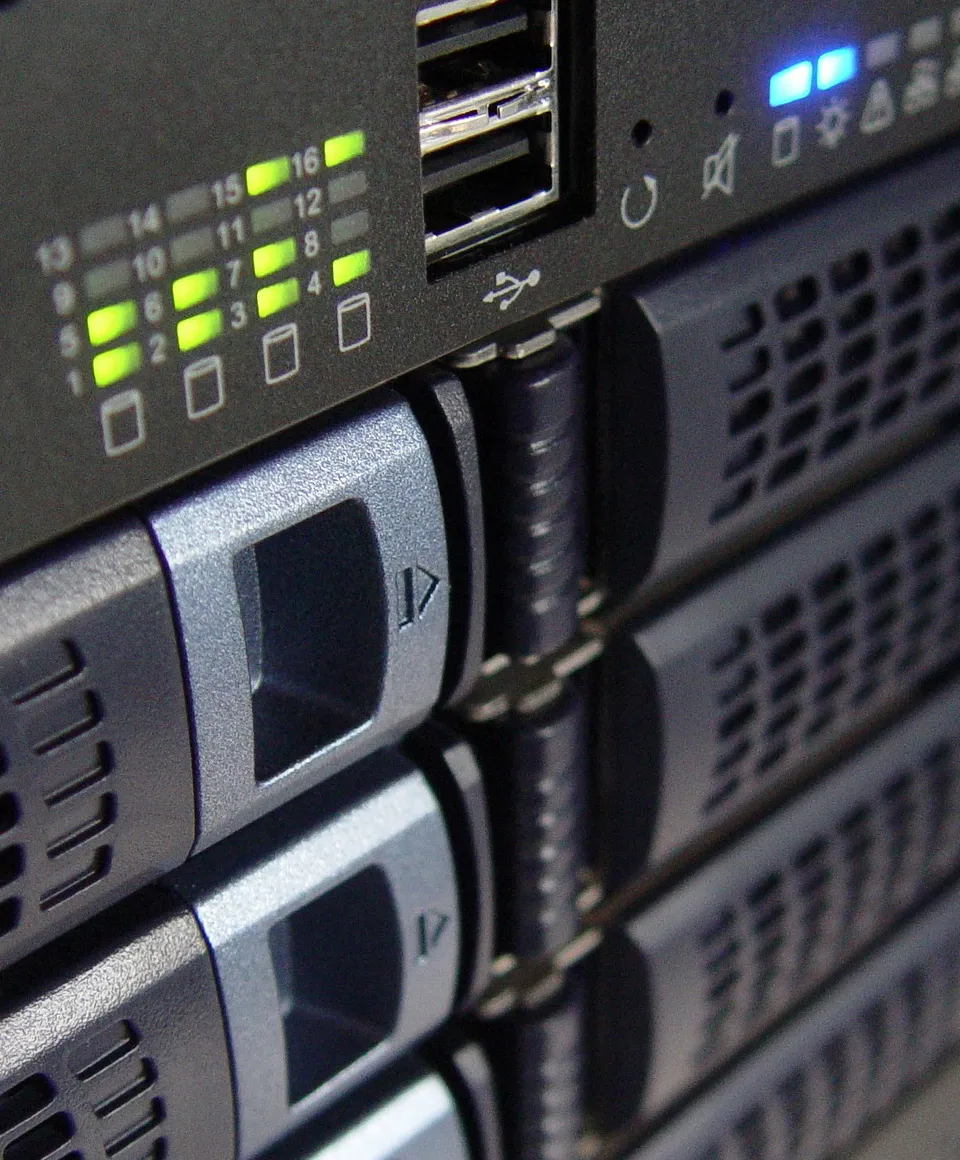
Top 10 advantages of cloud video analysis, processing and archiving

Cloud Media Management systems such as Videoma (which is a DAM or MAM) require two key elements for their operation: processing power for video analysis and metadata extraction, as well as a large amount of storage space to store video files that, in themselves, tend to take up quite a lot of space. And these two factors are what drove us to create Videoma Cloud, since the cloud technology itself provides us with both pillars in a flexible and dynamic way, with total control over how much power or space can be allocated to the platform at any given time. On top of that, the following are additional advantages the cloud provides:
1. Flexibility. Having a video processing, analysis and storage system in the cloud, such as Videoma, offers much more flexibility than using a local server. The mere fact that cloud platforms already have to comply with certain security and legal regulations allows you to concentrate on your business and not on the video processing hardware platforms you need. This flexibility also materializes in automatic scaling, hardware independence and other details that you will see in the following points.
2. Cost savings. One of the main arguments for having video or data processing platforms in the cloud is that the cost is directly proportional to usage. In the case of on-premise installations, these require a hardware that has to be adequately sized, taking into account the average workload and possible peaks. This means that there will always be spare hardware capacity “just in case”. Or, put another way, that capacity has been paid for and is only used from time to time. And if there is ever a peak workload that exceeds the capacity of the installation, one of the processes will be delayed, because it will have to wait for its turn.
With cloud, none of this happens. Because cloud systems can be scaled up and down, you can always have exactly the video processing power you need. And pay only for that. If you normally only use the system at 20% load, the bill will be for that 20%. But if, on occasion, you need 500% because a large batch of videos has just arrived and you need to process them as soon as possible, that is no problem as well. New instances are added to ensure speed of operation. And you only pay for them, as long as they are used. When they are no longer needed, the processed data is saved and unnecessary instances are deleted. All of this automatically, from the cloud control panel.
3. Security. As we have already mentioned, security is a major issue today, but the main cloud platforms have already solved it, because it is an intrinsic part of their business. The fear that many people have of losing control over their data if it is not on a local hard disk is unfounded, since all cloud platforms use encryption for stored data and use secure connections for all data in transit. In fact, one of the jobs of the cloud provider is to ensure that this is the case 24/7. Therefore, the video material that Videoma processes is secure in the cloud.
4. Automatic updates. In an on-premise system it is necessary to be aware of updates of the operating system, software and hardware so that everything works correctly. Drivers, memory upgrades, component replacement… all of this disappears with the cloud. It is the cloud provider who makes sure that everything is up to date and works correctly. Both hardware and software. And we at ISID take care of the Videoma core, which we always keep up to date and optimized. This saves the customer from needing an IT department.
5. Mobility. In this case, the term “mobility” refers to two aspects: on one hand, cloud systems allow easier access from mobile devices, since a browser is usually enough to use them and all security aspects are controlled by the cloud provider. However, there is another very interesting issue for the customer: mobility between cloud service providers. A cloud based MAM, if it is containerized, can be moved seamlessly from Amazon to Azure or any other provider, if necessary. In just a couple of minutes.
6. Collaboration. The ubiquitous access mentioned in the previous point is also an advantage when it comes to encouraging collaboration between work teams in the company. With Videoma in the cloud it is possible to collaborate easily, even from mobile devices, and upload videos, share information or work on the same project. And another advantage is file deduplication. By having physical servers in several locations, it is very possible to duplicate files, wasting unnecessary space and resources. In the cloud all this does not happen, since there is a single large “data lake”.

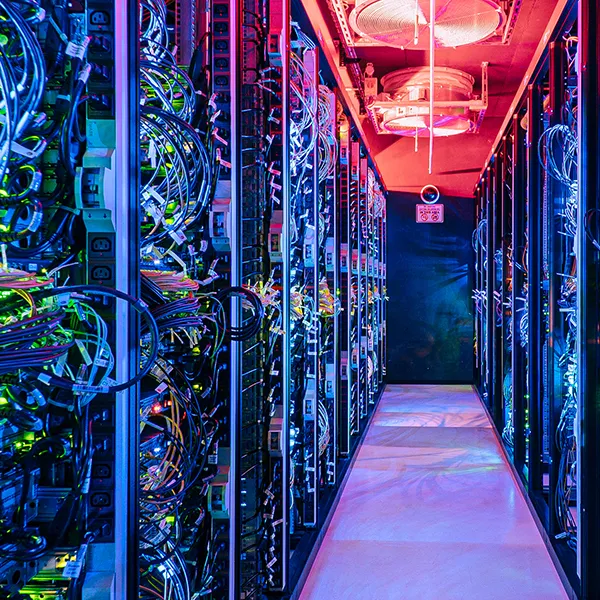
7. Control. Having a cloud platform offers a type of control that is not easily possible in on-premise installations. From the provider’s control panel we will have access to all aspects of the platform, we will be able to supervise the workload, create settings, give user permissions, obtain reports, etc.
8. Integrity. Although this section also belongs to the security area, by having a cloud service we are better protected in the event of disasters or system failures. Cloud providers perform redundant backups and in 20% of disaster cases, the system is up and running again within 4 hours. In on-premise systems this percentage drops to 9%.
9. Competitive advantage. Most of the above points, combined, offer a clear competitive advantage over customers using on-premise video analytics systems, as they do not have the flexibility of growth, connection, or the intrinsic security of cloud systems.
10. Sustainability. This issue, which is very important today, is also solved by using cloud providers. All of them use data centers that are as sustainable as possible, many of them powered by renewable energy, and participate in recycling programs for the hardware that is being replaced. These initiatives are costly for any SMB to undertake personally, both in terms of personnel and time. By using the cloud, all those concerns disappear.
Conclusion
The concepts of SaaS (Software as a Service) and cloud are inextricably linked and are the future of massive data computing. Creating a local platform for video analytics, with a few exceptions, is an anachronism. Why limit yourself to processing and storage capacity, when you can have much more or much less, as needed at any given moment? Although Videoma Cloud does not yet use the SaaS model, it is a cloud application that can offer you all the advantages of the cloud. Full access from anywhere, any device, any time.

